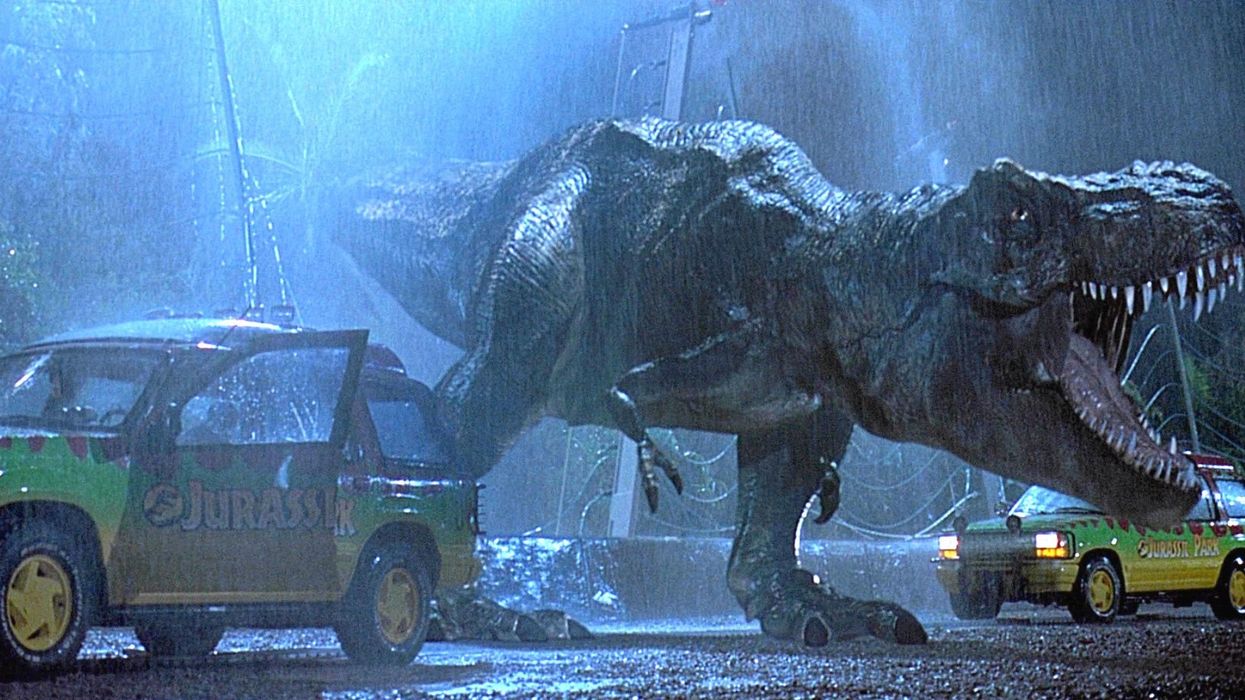Why 'Jurassic Park' and Its Framing Still Hold Up
Jurassic Park came out in 1993 and it still looks better than most of the movies that came out today. How did Spielberg and Dean Cundey do it?

There are two moments in your life: The moment you first watch Jurassic Park and every moment that follows. Everything that happens before that doesn't actually matter. Parents, show your children Jurassic Park as soon as you can so their lives have meaning.
While these statements might seem hyperbolic, they feel real to a large group of movie fans. That's because the size and scope of Jurassic Park feels larger than life. There are subtle ways the mastery of Spielberg captivates the audience. Ways that Spielberg didn't really follow in his sequel, and things that the other sequels never seem to capture either.
Check out this video from Film & Stuff and let's talk more after the break.
It feels like we always come to these videos and suddenly realize the true genius of Spielberg is not the big things he does but the little accents he puts into his films that just make them better. Shooting Jurassic Park in the aspect ratio of 1.85:1 gave the audience 24% more vertical landscape within each frame.
That meant he could shoot tall dinosaurs and make them look that way. Spielberg utilized this inside the wide shots to really make the humans feel undersized and the world feel huge.
In fact, Spielberg has been sneakily using aspect ratio to tell his stories since he started.
But it wasn't only used for the dinos.
Spielberg knew that this screenplay was truly about humans playing god. So once we got into the story, he had to devote the angle to show us looming over the dinosaurs.
These were our creations we had to look down upon.
The entire first act of Jurassic Park sets up the hubris of humanity. We think we should be at the angle of looking down on our creations, but that's about to happen is that that awe and wonderment we used in act one to think we had a sense of control, it's about to be inverted into fear and anxiety as our creation physically looms over us and embodies our space.
In the second half of the film, it's the dinosaurs time to loom over the humans. It starts small, with a T-Rex throwing its food onto a truck. Reminding us about being an apex predator. But then it's about use trying to share an earth with these creatures. And Spielberg has some tricks when it comes to scale here.
The first is showing the dinosaurs in relation to objects we know. Like a car window.
He also focuses on bringing dinosaurs into our world. Seeing them fumble around in spaces built for us, spaces they are truly too large to inhabit.
One of the ways Spielberg exhibits these kinds of feelings is using a frame within a frame. That means showing a human POV via something from our normal walk of life while showing a dinosaur intersecting with it. Like this raptor in the window.
Can the aspect ratio contribute to the way the audience feels?
How can you get inventive with your framing? What are you trying to say with your shots? And how should the audience feel?
Get out there and do it.
What's next? Write what you know is bullshit!
"Write what you know" is the most popular piece of advice given to people all over the world. And it's complete bullshit.
Click the link to learn more!
















